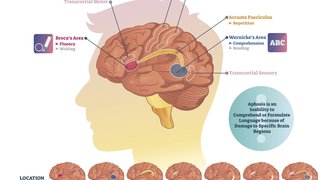
Joe Biden, the former Vice President of the United States, has experienced a brain aneurysm. That’s a little known fact. What’s also little known is that brain aneurysms can be linked directly to the majority of hemorrhagic strokes, the most devastating and life-threatening type of strokes.
Why is this important?
Because brain aneurysms can happen to anyone at any age. About one in 50 people have them, slightly more women than men. Even more significant, if they’re detected and treated before a rupture occurs, some of the strokes caused by brain aneurysms could be prevented.
As a neurosurgeon at UT Southwestern, one of my goals is to increase the awareness about them. It’s important for people to understand the impact they can have, and options for treating them.
What are brain aneurysms?
I suggest patients think of brain aneurysms like a plumbing problem.
Many occur at points where blood vessels divide. This is where the pressure from blood flow is the highest. They’re usually found during evaluations for other medical conditions. In most people, they don’t cause symptoms.
However, when brain aneurysms get larger and weaken blood vessels, they can bleed or cause pressure on the brain, resulting in a hemorrhagic stroke. When this happens, a number of patients say they experience the “worst headache of my life.” Until then, warning signs of rupture are rare.
Preventing aneurysms by changing blood flow
The best time to treat an aneurysm is before brain bleeding occurs.
A newer option for treatment is flow diversion. It’s a less invasive procedure that diverts blood flow away from the aneurysm. It’s an endovascular technique, meaning we access the treatment area from an artery in the leg. This is similar to cardiac procedures that are more common.
Here at UT Southwestern in Dallas, we’re able to reinforce blood vessels in the brain using flow diversion techniques. This encourages blood flow away from the aneurysm. Essentially, we’re able to correct the plumbing problem in the brain to prevent a leak.
Current results with flow diversion show an improved rate of occlusion over time. In fact, when blood flow is re-directed, scar tissue may form, and the brain aneurysm may simply shrivel away.
How safe is flow diversion?
We have proven success with this new flow diversion technique. It’s an option for patients with unruptured brain aneurysms. This includes those who have a wide opening (fusiform) or have a higher chance for recurrence.
The placement of a flow-diverting stent requires patients to take blood-thinning medications for three to six months for safety reasons. As a result, individuals with chronic nosebleeds, heavy menstrual periods, or other issues that inhibit blood from clotting are not candidates for this treatment.
It is safest to have this procedure performed in a center like UT Southwestern -- where specialists in neurosurgery, neuroradiology, neuroanesthesiology, and neurocritical care work are all part of your team. When treated at a major center, patients can also explore other treatment alternatives, including coil embolization and surgery.
Aneurysm risk factors
With detection of brain aneurysms, and the use of pre-emptive treatments like flow diversion, we are able to decrease the chances of some patients having hemorrhagic strokes.
Some of the risk factors for brain aneurysms include:
- Smoking
- Family history of brain aneurysms
- Health problems like chronic hypertension, bicuspid aortic valve, Marfan’s syndrome, or polycystic kidney disease
If you’re at risk, talk to your doctor about options for evaluation and then treatment. To request an appointment at UT Southwestern, you can click here or call 214-645-8300.











